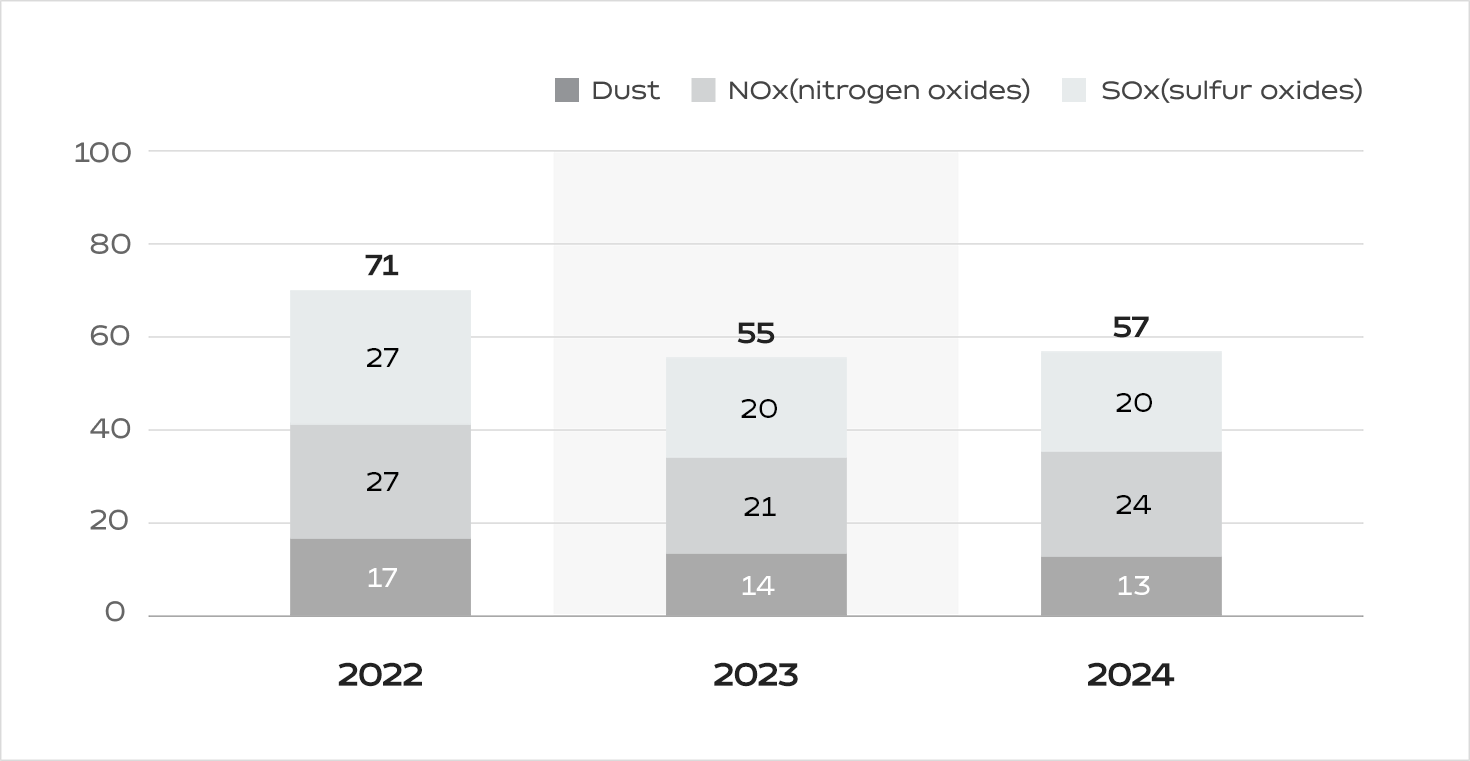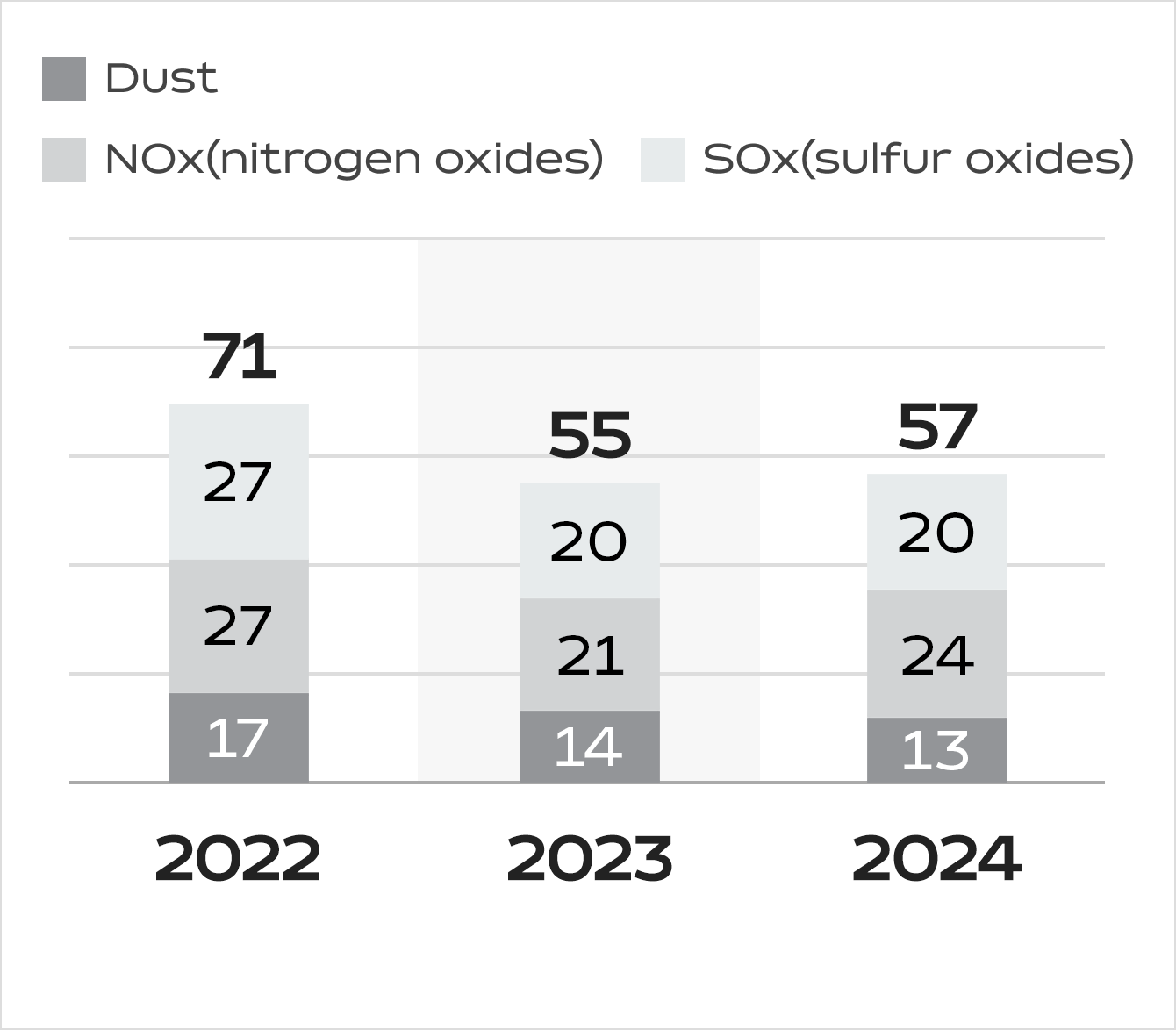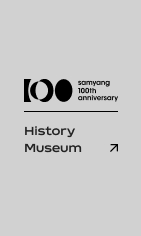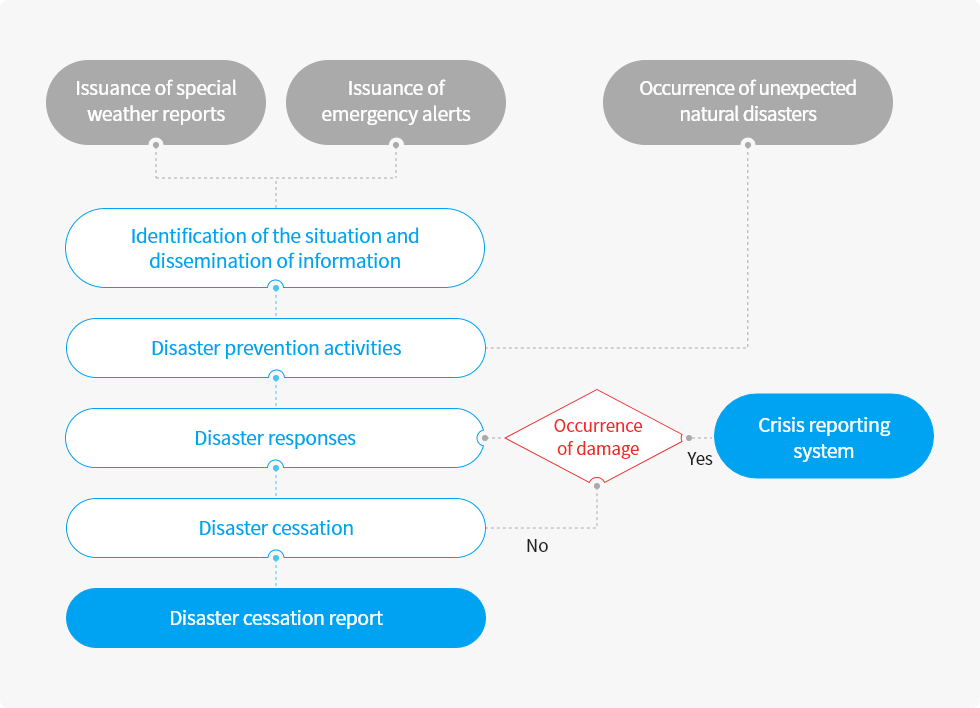Environment
We strive to protect the environment for the future we envision.
Making our business activities eco-friendly is a mission we take seriously. We are dedicated to making continuous efforts in identifying and addressing elements that impact the environment to protect our planet and make life more abundant and convenient for mankind.
Environmentally
-Friendly
Business
Management
& Carbon
Reduction
Activities
We are resolute in our determination to practice environmentally-friendly business management and take part in the combat against climate change.
Environmentally-friendly business practices are becoming imperative and standard for business management. Furthermore, with the commitment to reduce carbon emissions getting stronger around the world, the scope of relevant regulations are widening. Against this backdrop, Samyang Corporation is establishing a vision for eco-friendly business management and detailed plans based on the analysis of the global environmental trends and carrying out eco-friendly business measures and carbon reduction activities by developing a roadmap for carbon neutrality.
Environmentally-Friendly Business Management
With environmental management highlighted as the key element of ESG, the pressure from domestic and overseas investment institutes and the global community on businesses to strengthen their environmental management capabilities and level up their efforts to combat climate change is continuously growing. Stepping up to do our part, Samyang Corporation aims to build a life of abundance for mankind while protecting the planet based on our vision of “Ingredients that add value to life,” and in the long term, become a specialty material producer mainly focusing on the areas of health & wellness and environmentally-friendly advanced materials.
Strategies for promoting Environmental management
-
Achieving Net Zero
EmissionsExpanded the use of renewable energy
Improve processes and accelerate the transition to renewable energy
Developing a Roadmap to Net Zero Emissions by 2050
Establish high-efficiency energy facilities
Integrate digital technology
-
Strengthening the Circular
Economy SystemIncreased waste recycling rate
Reduced water usage
Efforts to reduce air pollutants
Efforts to reduce hazardous chemicals
Developed recycling technology and expanded investments
-
Strengthening the
Environmental
Management SystemEstablishing environmental management governance
Strategize green products
Obtain and maintain ISO 14001 certification
Increase employee’s awareness of environmental management
Company-wide goal management
Environmental Management Guidelines
Samyang Corporation aims to preserve the clean and beautiful environment of nature and create a healthy and abundant life for mankind by continuously making improvements to elements that impact the environment.
We faithfully comply with laws and standards related to the domestic and foreign environment and fulfills corporate social responsibilities by cooperating with eco-friendly policies of the country and institutions, etc.
We actively strive to minimize carbon emissions and achieve the 2050 Net Zero goal by effectively managing resources and energy consumption.
We minimize the generation of waste and pollutants and increase resource recycling.
We strengthen environmental management awareness and encourage active participation through education and training for all employees and suppliers.
Environmentally-Conscious Procurement of Raw Materials
-

Green Purchasing
We comply with environment-related laws and apply low-carbon and eco-friendly green purchasing measures that consider environmental factors from the early purchasing phase. -

Sustainable Palm Oil
We are an official member of the Roundtable on Sustainable Palm Oil (RSPO), an organization that handles issues related to environmental destruction and human rights of labor in the regions where palm oil is produced. We purchase palm oil that is produced in compliance with the lawful procedures. -

Sustainable PC Materials
Samyang Corporation uses waste materials - materials discarded after their intended use - as raw materials to produce Post-Consumer Materials (PCMs).
Eco-friendly Product Development
Samyang Corporation’s Food Business division Q.one white sugar is the only low-carbon product certified in the sugar industry in Korea. Q.one white sugar was the first in the domestic sugar industry to obtain carbon footprint certification in 2010, and succeeded in obtaining low-carbon product certification in 2013 through continuous efforts to reduce carbon emissions and is maintaining it until now. In addition, Samyang Corporation’s Chemical Business division is strengthening its eco-friendly material business by developing eco-friendly polycarbonate containing more than 90% of recycled plastic for the first time in Korea and using plastic pellets recycled from waste fishing nets.
Management of Greenhouse Gas and Air Pollution
Major countries around the world, including Korea, pledged to reach carbon neutrality (net zero) by 2050 and announced their mid and long-term carbon emission reduction targets in accordance with the agreement made by the international community. As a responsible member of the global society, Samyang Corporation established a mid and long-term roadmap to achieve net zero by 2050 with the aim to take active part in addressing the climate change issue, the biggest challenge that the world is facing, and become a sustainable company.
Roadmap for Net Zero by 2050
-
Reduce 42%
(2030) -
Reduce 72%
(2040) -
Reduce 100%
(2050)
-
Shift to renewable energy
-
Active carbon emission reduction activities
-
Improve energy efficiency
-
Develop eco-friendly products
Statistics on GHG Emissions
(Unit: tCO2eq)
* Figures are based on the comprehensive national GHG management system, and the sum of each emission source is the sum of values rounded down, which may have resulted in slight differences.
Statistics on Air Pollutant Emission
(Unit : Ton)


Climate Change Response Activities
Samyang Corporation strives to identify and manage the risks and opportunity factors that climate change can bring. To this end, we aim to select and manage the risk and opportunity factors that can have the most significant financial impact on Samyang Corporation. In the event of a physical climate risk caused by severe climate events such as heat waves and strong winds, an Emergency Committee is formed to provide rapid response and business recovery system. Moreover, a real-time earthquake observation system is installed to respond to automatic text transmission and automatic valve control in the event of an earthquake above the standard. This helps us respond quickly to problem situations and restore business activities smoothly. In addition, each business site is insured to prepare for risks, and there are special contracts related to natural disasters to cover recovery expenses and damages.
Physical Climate Change Risk Response System
Management of
Waste & Hazardous
Chemical
Substances
We minimize the impact on the environment
and implement measures to comply with
relevant laws.
With the dramatically increasing demand for the circulation of waste resource and diversified and strengthened laws related to the use and handling of chemical substances, the expectation towards companies to better manage waste and hazardous chemical substances is getting higher. Against this backdrop, Samyang Corporation is making the utmost effort to minimize environmental impact through the safe handling of waste, strictly separated disposal, and waste reduction. We also have measures in place to ensure our compliance with the laws related to chemical substances.
Waste Management
-

Waste Treatment Process
We manage all waste created by the activities of our plants in an efficient way. To minimize the amount of waste and environmental impact, we established a waste management procedure for each worksite to mange waste effectively. -

Waste Reduction Activities
We are committed to the fundamental reduction of waste by recycling and reusing waste created throughout the operation of our worksites.
Statistics on Volume of Waste Generated
(Unit : Ton)
Management of Hazardous Chemical Substances
-

Chemical Substance Management Procedure
We established a hazardous chemical substance management procedure for each worksite and handle chemical substances (storage, transportation, etc.) accordingly to manage the environmental risks posed by hazardous chemical substances. -

Compliance with Chemical Substance Regulations
We publish the Material Safety Data Sheet (MSDS), which is an important document that discloses the company’s product information, in accordance with the relevant law.
Chemical Usage and Emissions
(Unit : Ton)
* Based on five business sites, excluding two sites exempt from chemical emissions surveys
Energy
Management
We fulfill the demands of our community by carrying out proactive energy reduction activities.
There is growing demand for businesses to manage energy efficiently and utilize renewable energy to substitute conventional resources, such as oil and coal, in order to mitigate climate change. Samyang Corporation is fulfilling the demands of the community by carrying out proactive energy reduction activities across its worksites and reviewing the use of renewable energy.
Energy Management System
Samyang Corporation strategically manages the energy status of each worksite. Our independently-developed greenhouse gas management system enables us to manage data on our energy target and consumption. Based on this data, we carry out proactive energy reduction measures by setting the annual energy reduction target for each plant and implementing policies customized to the characteristics of each worksite.
Managing Energy Usage
(Unit: TJ)
* Figures are based on the comprehensive national GHG management system, and the sum of each emission source is the sum of values rounded down, which may have resulted in slight differences
Water Resource
Management
We address the global water issues through continuous management of water resources.
None of Samyang Corporation’s worksites use water sourced from regions with serious levels of water stress. As our primary business areas of food and chemicals have high levels of water consumption, we recognize the importance of effective water resource management and operate our business based on stringent in-house environmental management standards. We also take preemptive measures to comply with government regulations and mitigate water-related risks.
-

Water Usage and Recycling
We acknowledge the seriousness of the global water issues and make continuous efforts to reduce wastewater discharge and water consumption. -

Wastewater and Water Pollution Management
To minimize the discharge of pollutants and adhere to the legally-allowed discharge limits, we operate using an in-house standard that is stricter than the legal level.
Statistics on Water Usage
(Unit: Ton)






